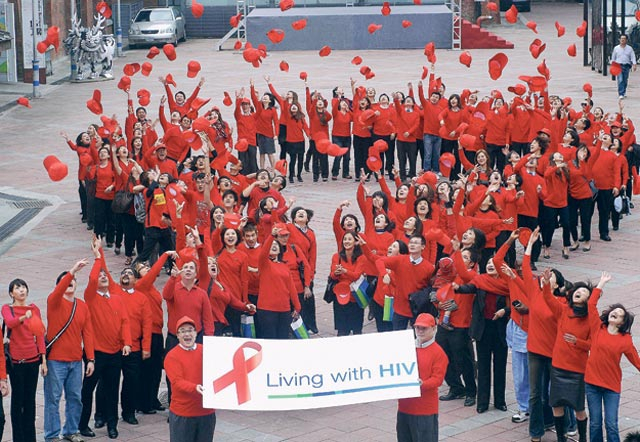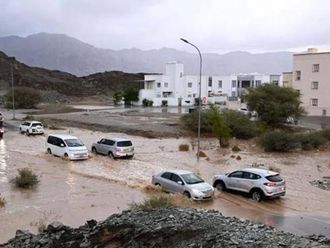Muscat: The Middle East and North Africa region is one of the two in the world where HIV infections are still on the rise, according to a joint report of the World Health Organisation (WHO) and the Joint United Nations Programme on HIV/AIDS (UNAIDS).
WHO and UNAIDS are now jointly campaigning for a new initiative to accelerate HIV testing and treatment coverage in the region where only 15 per cent of the estimated people in need of treatment are receiving it, making it the region with the lowest HIV treatment coverage in the world.
An advocacy document titled- “Accelerating HIV treatment in the WHO Eastern Mediterranean and UNAIDS Middle East and North Africa regions” was launched on Monday at the 60th session of the WHO Regional Committee for the Eastern Mediterranean now under way in Muscat.
The combined UNAIDS MENA region and WHO EM region comprise Afghanistan, Algeria, Bahrain, Djibouti, Egypt, Iran, Iraq, Jordan, Kuwait, Lebanon, Libya, Morocco, Oman, Pakistan, occupied Palestinian territory, Qatar, Saudi Arabia, Somalia, South Sudan, Sudan, Syrian Arab Republic, Tunisia, UAE and Yemen. As South Sudan is not part of MENA and leaves the EMR as of January 2014, data and information from South Sudan have not been reflected in this report.
The document, released in Muscat, analyses the regional context and offers a tailored regional framework for a significant scale-up in treatment coverage. It is built on four pillars: creating demand for testing and treatment; investing in sustainable systems for HIV care; delivering results in an equitable manner; and committing to urgent action.
Treatment crisis
“The treatment crisis in the region is reversible,” said Dr Yamina Chakkar, Director UNAIDS-Regional Support Team for the Middle East and North Africa, in a statement released by the Office of the WHO Representative in Oman. “We are eager to join forces with our partners and with regional leaders to renew the commitment and bring HIV testing and treatment services to the people who need them.”
In 2012, the report states, 347,000 people in the region were living with HIV, a 127 per cent increase over the number living with HIV in 2001. Antiretroviral therapy (ART) however, has transformed the global HIV response, mitigating the human costs of HIV and playing a vital role in slowing the further spread of the virus.
Across the region, HIV testing and treatment services are available, but several factors limit access for people in need: lack of awareness; fear of stigma and discrimination in families, workplaces, communities and in health care facilities which prevent people from taking an HIV test; and seeking care. As a result, an estimated 80 per cent of people living with HIV in the region are still not aware that they are carriers.
Some countries, however, have achieved considerably higher HIV testing and treatment coverage than the regional average, according to the report. Countries that have decentralised and integrated HIV service delivery into the health system and engaged civil society and private providers have succeeded in achieving much better coverage than those that have not.
This initiative calls upon leaders to commit to urgent action to increase access to HIV treatment in the region. “Treatment is fundamental to achieving an Aids-free generation, in addition to reducing morbidity and mortality, HIV treatment also reduces transmission. We cannot let this opportunity remain untapped. We must do more to garner both the individual and the public health benefits of treatment,” emphasised Dr Ala Alwan, WHO Regional Director for the Eastern Mediterranean.










